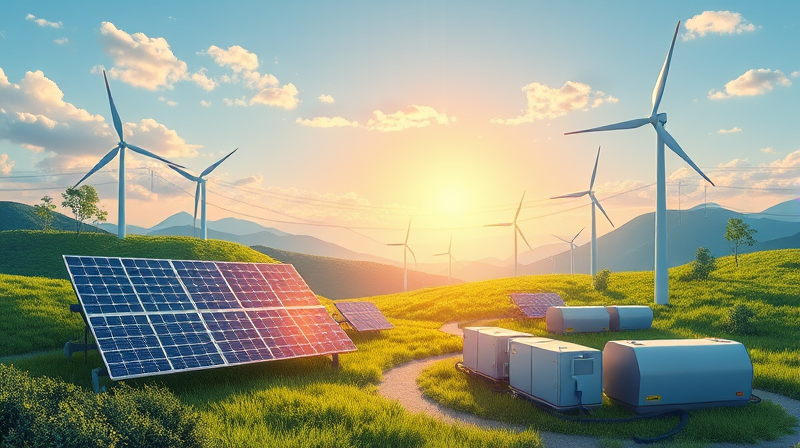
In an era defined by climate urgency and technological innovation, green energy stocks have emerged as some of the market’s most dynamic players. A new wave of supportive legislation is fueling opportunities that once seemed out of reach, reshaping industries and investment portfolios alike.
From sun-drenched solar farms to offshore wind arrays and advanced battery factories, the renewable sector is experiencing a renaissance—one where policy incentives serve as both catalyst and compass. Investors seeking to align financial goals with environmental impact are finding a fertile ground for sustainable growth.
The Inflation Reduction Act (IRA) and the Infrastructure Investment and Jobs Act (IIJA) have created an unprecedented policy landscape for clean energy development. Combined with state-level tax breaks and grant programs, these frameworks deliver a potent blend of financial stimuli.
At the federal level, commercial and residential projects can tap into a 30% federal investment tax credit for solar and other qualifying renewables, fostering rapid adoption across diverse markets. The Production Tax Credit (PTC) rewards green energy generation with recurring benefits tied to every kilowatt-hour produced.
Meanwhile, the Advanced Energy Project Credit supports innovation by providing up to 30% tax relief for manufacturers investing in key components such as solar modules, battery electrodes, and hydrogen electrolyzers. This incentive is steering capital toward innovation hubs and domestic supply chains.
On the state front, governments allocated over $24 billion in 2022 through targeted incentives, sparking competition among regions and accelerating projects from California’s sprawling deserts to New York’s waterfronts. These local policies often stack atop federal credits, offering compounding financial advantages for developers.
Between 2022 and the end of 2024, the United States announced $227 billion in clean energy investments, split across utility-scale solar, wind farms, energy storage installations, and green hydrogen initiatives. Approximately $100 billion has been deployed in large-scale infrastructure, with another $82 billion funneled into distributed systems like rooftop solar and efficient heat pumps.
In Q1 2025 alone, clean manufacturing investments skyrocketed to $14.0 billion, compared to just $2.5 billion in Q3 2022. Such figures underscore the massive public and private investments driving the sector’s expansion.
Beyond domestic borders, global capital is also flowing into U.S. clean energy, supported by ESG-focused funds and sovereign wealth investments. Municipal utilities are leveraging low-cost financing to upgrade grids, while commercial real estate owners retrofit buildings to qualify for tax breaks and reduce operating costs.
Hydrogen projects, often overlooked until recently, are now securing federal grants and private sponsorships to build production plants that promise carbon-free fuel for heavy industries and long-haul transport.
The equity markets have responded to this investment dynamism, with many renewable energy companies reporting double-digit gains year to date. From small-cap innovators to established utilities transitioning their fleets, the spectrum of opportunities is broad and diverse.
In addition to these front-runners, names like NextEra Energy (NEE), Brookfield Renewable, and Northland Power are frequently cited for their strong fundamentals and reliable dividends. Brookfield holds a 4.85% yield, while Northland offers around 3.18%, making them attractive for investors seeking stable long-term income streams.
International players such as Adani Green Energy and Sungrow Power Supply continue to expand their footprints, highlighting the interlinked nature of global renewable markets and the role of cross-border capital flows.
Solar has captured the lion’s share of capital, with $92 billion allocated for utility-scale projects and $52 billion already deployed. Post-IRA, an unprecedented 72 gigawatts of solar projects entered interconnection queues, reflecting a historic renewable energy deployment surge across 38 states.
Storage solutions, particularly lithium-ion battery systems, have seen 51% year-over-year growth, vital for balancing the intermittent nature of solar and wind. Microgrid installations and community energy storage are gaining traction, offering resilience against grid disruptions and enhancing local energy security.
Distributed renewables and fuel cell technologies also experienced a 31% investment uptick, as businesses and municipalities prioritize sustainability goals alongside grid modernization efforts.
Beyond environmental gains, the renewable energy boom is reshaping economic landscapes. Thousands of new jobs are being created in manufacturing, installation, engineering, and maintenance roles, often in regions that have struggled with industrial decline.
These initiatives are designed to ensure that the transition to clean energy is inclusive, distributing both economic and social benefits across diverse populations.
Despite the sector’s robust tailwinds, investors should remain mindful of inherent risks. Technological breakthroughs can quickly shift competitive dynamics, while supply chain bottlenecks for critical minerals may affect project timelines and costs.
Policy dependence is another factor; while current incentives are strong, future legislative changes could alter the financial calculus for new developments. Likewise, interest rate fluctuations and macroeconomic shifts can impact financing costs and equity valuations.
To navigate this evolving environment, consider adopting a multi-faceted investment framework that balances growth potential with risk management.
Additionally, monitor key policy milestones, stay informed about emerging technologies, and engage with ESG analytical tools to assess companies’ environmental and governance practices.
Policy incentives at federal and state levels have set the stage for a transformative surge in green energy investments, translating into rapidly scaling clean supply chains and a flourishing ecosystem of innovation.
As capital continues to flow into solar farms, wind arrays, battery factories, and hydrogen plants, green energy stocks are poised for sustained growth. For investors, this moment represents both a financial opportunity and a chance to contribute to a more resilient, sustainable future.
By combining thoughtful strategy with a long-term perspective, stakeholders can harness this decade’s renewable revolution to achieve both economic returns and meaningful environmental impact.
References













